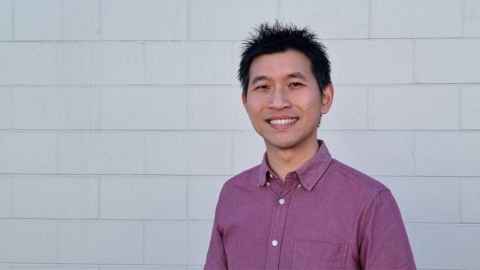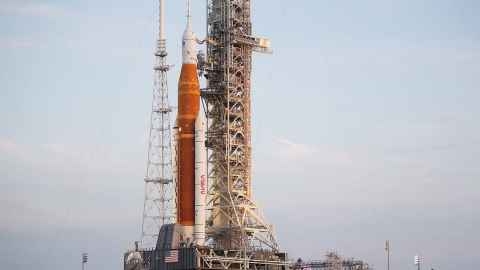The venture taking New Zealand wool to the moon
28 May 2023
Alumnus Dr Shaun Tan and his company, Lanaco, are supplying filters made from New Zealand wool to NASA's Artemis programme, which aims to return to the moon.

A New Zealand wool product developed by Auckland-based filter media company Lanaco has been adopted as part of NASA’s mission to the moon.
The Artemis programme is a US$35 billion human spaceflight programme. Lanaco developed a filter system that first went into space in 2022 with Artemis 1, an uncrewed moon-orbiting mission, which was the first major spaceflight of the programme. Lanaco will also form part of Artemis 2’s life support system.
Lanaco’s wool filters have an important role to play in a spacecraft’s emergency response to protect astronauts. In the event of a spacecraft fire, the wool filters form a barrier to the main technology filters and won’t promote the fire or degrade rapidly in the presence of hot particulates such as water droplets or dangerous gases.
Where previous synthetic media would glaze over and become unusable in less than 10 minutes, the Lanaco filters onboard Artemis can extend system life more than sixfold.
The company’s core business is gaseous filter media for removing harmful particulates encountered in a range of high-volume applications, such as PPE, air conditioning and ventilation in domestic, commercial, automotive and industrial applications. Clients have ranged from the NZ Olympic team to home ventilation company DVS.
Lanaco’s partnership with NASA has been in development for years. In 2017, Lanaco received a call from the Jacobs Engineering Group, a contractor at Johnson Space Center in Houston. Jacobs had been searching around the world for organisations that might have the technical expertise to extend the life of NASA’s current respirator.
The emergency breathing device NASA designed for environments such as the International Space Station needed to be adapted for the unique features of the Artemis missions.

Lanaco’s Chief Technology Officer is Dr Shaun Tan, an alumnus of the University of Auckland Business School’s Centre for Innovation and Entrepreneurship (CIE). Shaun says, “We have used the technology in other safety applications such as masks, in industrial settings where there is lots of polluting dust in wet and humid environments.”
Plenty of inventions developed for space have ended up being adopted for use on earth, including scratch-resistant lenses, smoke detectors, ear thermometers, cordless tools, tap water filters, memory foam and more. Shaun says that the blue-sky thinking required for creating technology in space is helpful for invention.
“Space sometimes allows certain product solutions to be used when they might not be feasible on the ground due to cost or practicality concerns, but because of the uniqueness of the problem that is solved, they become the perfect solution! Then, over time, such pioneering technology becomes more feasible for common use.”
Shaun took part in CIE’s Velocity entrepreneurship development programme, originally as a participant, then as part of the student organising committee. Participating in Velocity brought out a passion for bringing research out of the lab into the commercial world.
Shaun says, “Being heavily involved in Spark (now Velocity) and a stint at Stanford gave me the commercialisation and life skills that I needed and still use today.” Shaun has continued his relationship with Velocity over the years as a speaker, mentor and judge.
Shaun and the Lanaco team are continuing to innovate with technology, and are currently advancing the production of biodegradability and sustainability characteristics to meet the rapidly growing demand for such products. Shaun says, “We are now putting our filters in many different consumer and industrial applications. Some of them are going to be out this year and some next – watch this space!”
For in-depth information, read NASA’s article.